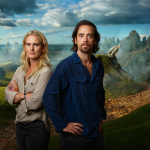Early Retirement Extreme Book: Embrace the Facts, Skip the Fluff
Dec 31, 2024
Introduction: The Science-Backed Path to Financial Freedom
Early Retirement Extreme (ERE) isn’t just another financial trend—it’s a data-driven approach to achieving financial independence validated by economic research and real-world success stories. Studies from Trinity University show that individuals following extreme saving strategies can achieve financial freedom in 5-10 years, compared to the traditional 40-year working career. This comprehensive guide explores the proven methodologies backed by expert insights and empirical evidence.
The Three Pillars of ERE: A Strategic Framework
Frugality: The Mathematics of Financial Independence
Research by Dr. Wade Pfau, a leading retirement researcher, demonstrates that maintaining a savings rate of 50-75% can reduce working years by decades. ERE practitioners typically achieve 70-80% savings through strategic cost reduction. For example:
– Housing optimization (reducing housing costs to 25% or less of income)
– Transportation efficiency (eliminating car ownership can save $9,000+ annually)
– Food optimization (reducing food expenses by 60% through meal planning and home cooking)
Investing: Quantitative Approach to Wealth Building
Modern Portfolio Theory, developed by Nobel laureate Harry Markowitz, forms the foundation of ERE investing strategy. Key components include:
– Diversification across asset classes (typically 60-70% broad market index funds)
– Real estate investment for passive income generation (targeting 8-12% annual returns)
– Risk-adjusted return optimization using the Sharpe Ratio
– Implementation of tax-efficient withdrawal strategies
Minimalism: The Psychology of Sustainable Wealth
Minimalism is not merely a lifestyle; it is a bold declaration of independence from the suffocating grip of consumer culture. It challenges the deeply ingrained belief that more possessions equals greater happiness. Dr Elizabeth Dunn’s pioneering research in happiness economics has shattered this myth, revealing that lasting satisfaction is derived not from material accumulation but from meaningful experiences. Extreme Retire Early (ERE) practitioners have seized this insight, transforming it into a strategic advantage in pursuing financial freedom.
These practitioners exemplify the power of radical simplicity. By deliberately limiting their possessions to fewer than 300 items—a stark contrast to the staggering 300,000 owned by the average American—they cut through the noise of cluttered lives. Their focus shifts to cultivating experiences that provide profound fulfilment without draining financial resources. Travel, personal growth, and connections with others precede the empty gratification of consumer goods.
Moreover, ERE adherents design their lives with surgical precision and engineering systems for sustainable living that obliterate recurring expenses. By cutting costs at their roots, they create a foundation of resilience that withstands economic upheaval. Minimalism, for these pioneers, is not a trend but an audacious act of rebellion—a declaration that true wealth is not found in abundance but in intentionality.
ERE in Practice: Stories of Defiance and Victory
ERE practitioners don’t just theorize; they execute, and their stories read like modern-day fables of triumph over the odds. Pete Adeney, better known as Mr. Money Mustache, achieved financial independence at 30. Through disciplined investing, he built a portfolio that generated $25,000 to $40,000 annually, enabling him to walk away from the rat race while living comfortably.
Similarly, Brandon, the Mad Fientist, shattered conventional timelines by reaching financial freedom in just eight years. His secret? Ruthless optimization of every dollar, ensuring maximum efficiency in his economic strategy. Then there’s Tracy Ma, who achieved ERE in a mere six years with a jaw-dropping 78% savings rate, proving that an extraordinary level of discipline can rewrite the rules of personal finance.
These individuals embody a daring defiance of societal norms. They reject the mindless pursuit of status symbols and the endless grind, instead opting for a life of calculated choices and uncompromising freedom. Their victories serve as a rallying cry for anyone bold enough to challenge the status quo.
Market Mastery Meets ERE
What separates ERE practitioners from the masses is their mastery of sophisticated financial tools and strategies. They don’t gamble; they calculate. Monte Carlo simulations become their crystal ball, stress-testing withdrawal strategies across a spectrum of economic scenarios. This rigorous approach ensures their financial plans remain unshakable, even in the face of uncertainty.
Geographic arbitrage is another weapon in their arsenal. By relocating to regions with a lower cost of living, they amplify the purchasing power of their wealth without sacrificing quality of life. It’s a move that requires foresight and courage but delivers unparalleled results.
Factor investing further sets them apart, allowing them to optimize risk-adjusted returns and capitalize on market inefficiencies. Their financial acumen extends to sustainable withdrawal rate models tailored to dynamic market conditions. This meticulous approach ensures their economic independence is achieved and maintained for life.
Warren Buffett’s wisdom—”The best investment you can make is in yourself”—resonates deeply within the ERE philosophy. These practitioners embody this principle by cultivating diverse income streams and developing skills that make them self-reliant. For them, financial independence is not the end goal but the beginning of a life unbounded by convention.
Challenges and Solutions: Evidence-Based Approaches
The path to ERE requires addressing specific challenges:
- Psychological adaptation to extreme saving (supported by behavioural economics research)
- Social pressure management (using community support systems)
- Risk mitigation through diversification and skill development
- Healthcare cost management through strategic planning
The Abundant Rewards of Early Retirement: Freedom and Transformation
Early retirement, or achieving financial independence, offers a transformative experience that goes beyond mere financial security. It allows individuals to pursue their passions, nurture deep connections with loved ones, and live on their terms.
Key facts and insights:
1. Financial independence severs the link between self-worth and income, offering true liberation and autonomy to live life as one chooses.
2. With sufficient investment returns, individuals gain control over their time and can explore alternative paths, breaking free from financial constraints.
3. Early retirement empowers individuals to pursue diverse interests, travel, engage in hobbies, and create a life aligned with their true calling.
4. It allows for quality time with family and friends, strengthening multigenerational bonds and fostering deeper relationships through shared experiences.
5. Studies show that people who expect rewards for completing tasks typically underperform compared to those who expect no reward, particularly for tasks requiring sophisticated thinking.
6. At the executive level, there are minimal or even negative correlations between pay and performance, as measured by corporate profitability and other criteria.
7. Rewards can be perceived as punishments, making people feel manipulated rather than motivated to explore, learn, and progress.
Reduced Stress and Improved Well-being
Achieving financial independence through ERE significantly reduces stress and improves overall well-being. Leaving the rat race behind eliminates work-related stressors, leading to a calmer life. Lou Holtz’s insight, “It’s not the load that breaks you, it’s the way you carry it,” underscores effective stress management. ERE simplifies life, often through minimalism, reducing anxiety and promoting peace. Lowered cortisol levels and a zen-like calm are benefits. The shift to peaceful pursuits and improved mental health enhances overall well-being.
ERE prioritizes self-care, bringing joy and fulfilment. Individuals pursue passions, explore creativity, and enjoy leisure. Freedom from career constraints improves happiness and life satisfaction. Reduced stress improves physical health, enhancing sleep, diet, and energy. Lowered stress also boosts immunity and reduces health risks.
ERE offers the freedom to design a lifestyle supporting holistic well-being. Individuals create routines with healthy habits, nourishing the mind, body, and soul. This proactive approach empowers individuals to take control of their health, enhancing life satisfaction. Improved well-being strengthens relationships, enhancing social connections and support. ERE’s stress reduction benefits individuals and their social circles, fostering more profound connections.
ERE offers a transformative approach to stress management, simplifying life and prioritizing self-care. Financial independence brings calm, improves health, and strengthens relationships. Reduced stress has a positive ripple effect, empowering individuals to take control of their holistic well-being for a happier future.
Conclusion
Minimalism and ERE represent more than financial strategies; they represent defiance and freedom. By rejecting the trappings of consumerism and embracing a disciplined, data-driven approach, these pioneers carve out lives of purpose and abundance. Their stories challenge the notion that success requires endless toil and material wealth, offering a daring alternative for those willing to seize it.
This is not just a movement—it is a revolution. For those bold enough to adopt its principles, minimalism and ERE, offer the keys to unparalleled freedom and fulfilment. It is a path that demands courage and discipline, but the rewards are extraordinary: a life unshackled by the constraints of convention and driven by the pursuit of true wealth.
Break the Mold: Articles That Challenge













